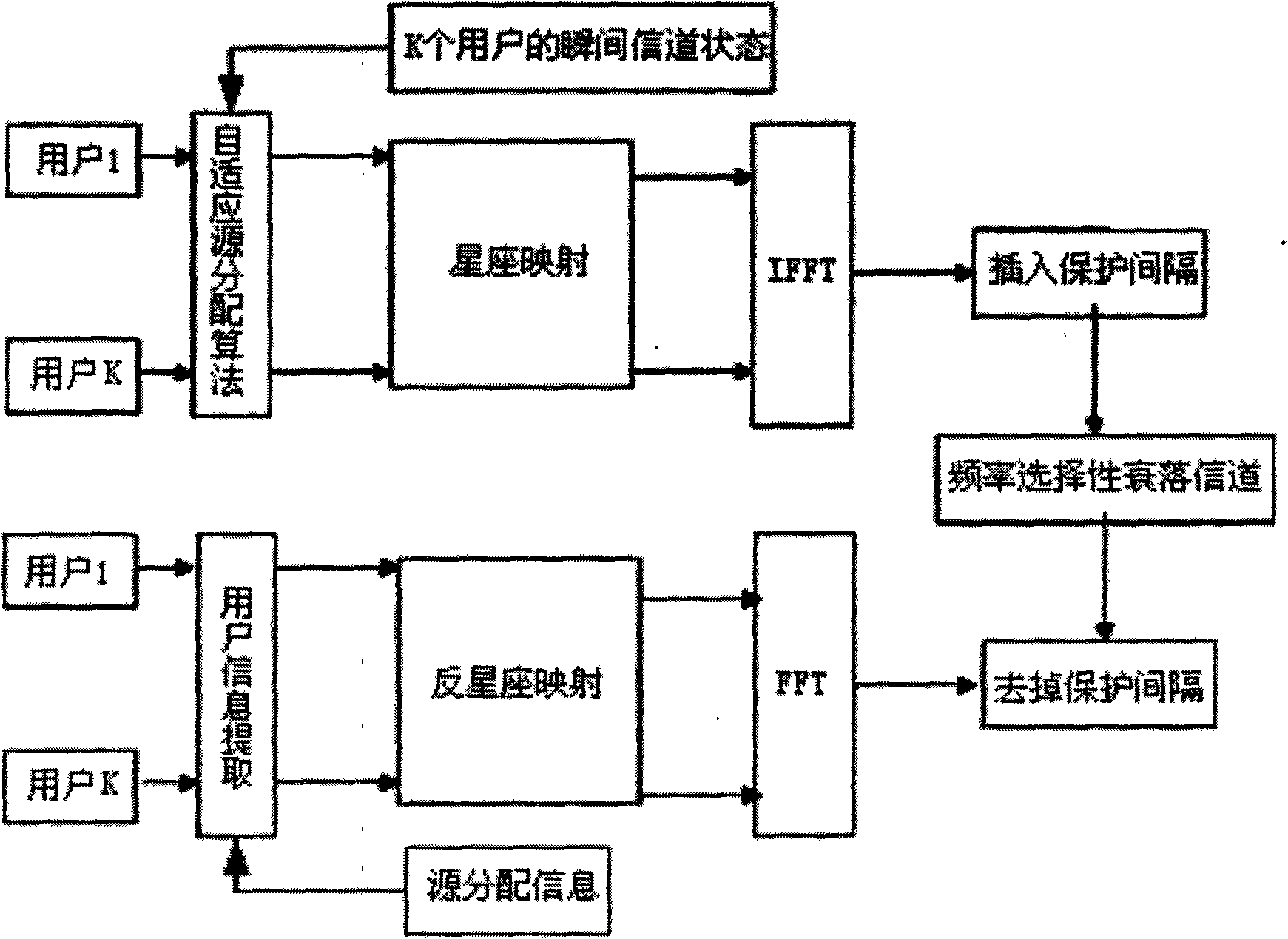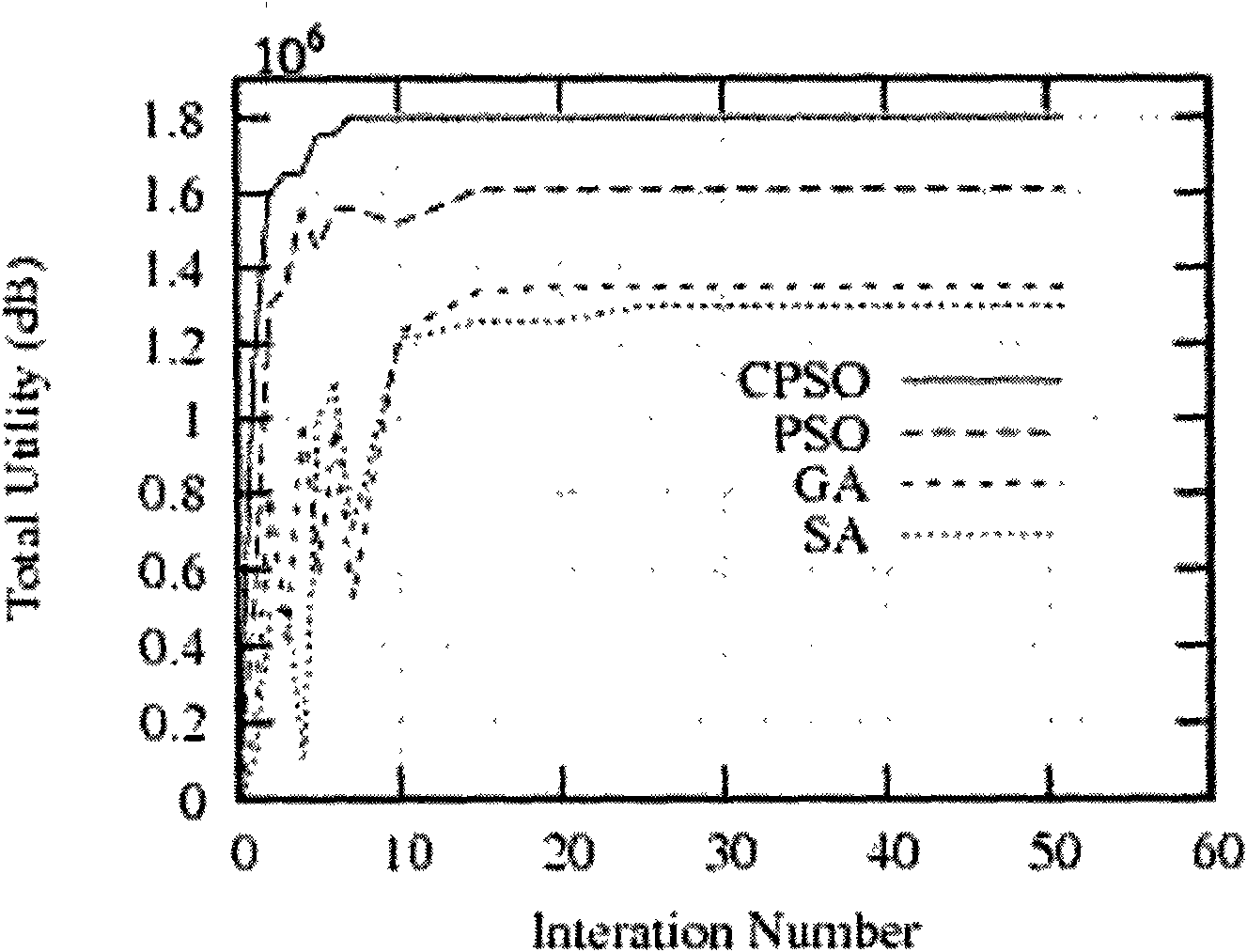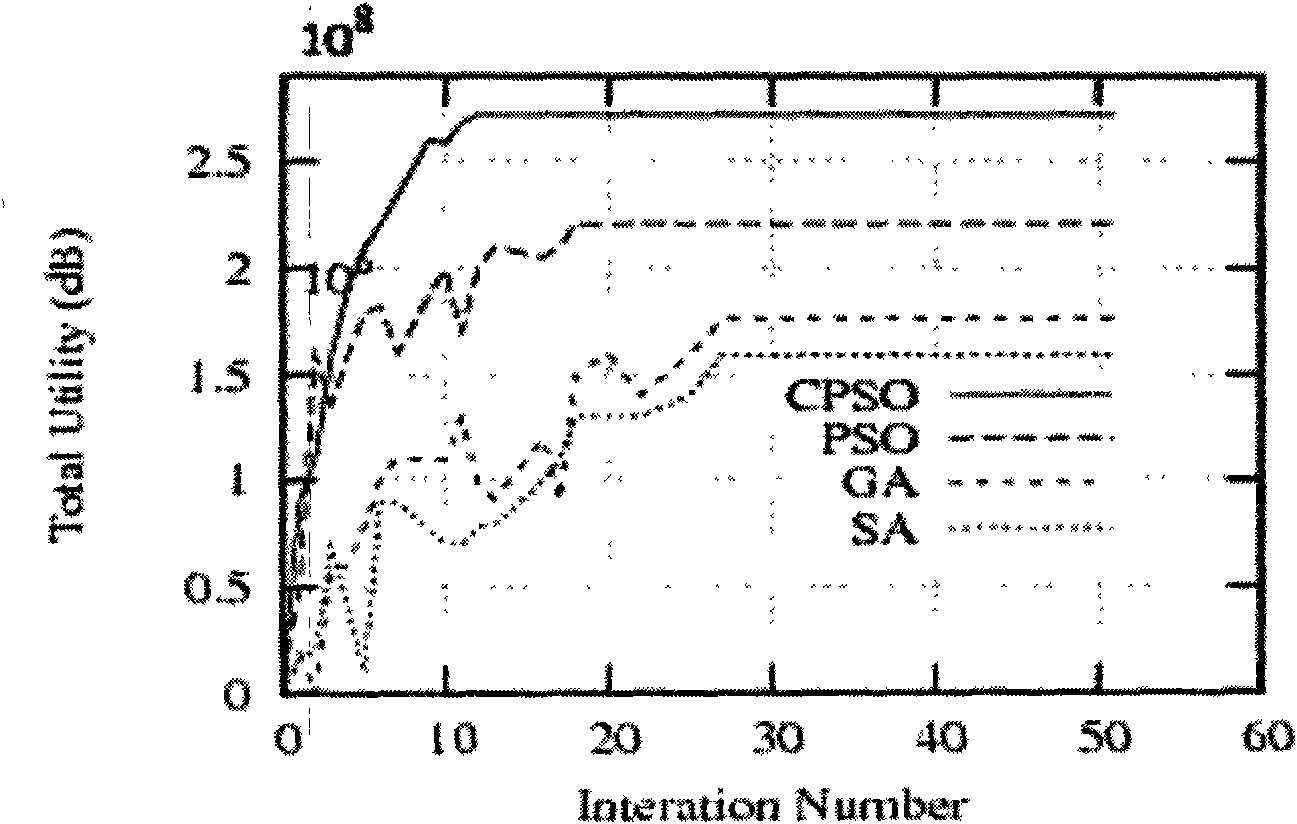Chaotic particle swarm optimization-based OFDM system resource allocation algorithm
A chaotic particle swarm and allocation algorithm technology, applied in the field of system resource allocation, can solve the problems of premature particle swarm algorithm and lack of population diversity
- Summary
- Abstract
- Description
- Claims
- Application Information
AI Technical Summary
Problems solved by technology
Method used
Image
Examples
Embodiment 1
[0079] The purpose of the multi-user OFDM adaptive allocation algorithm is to find the optimal power so that the system rate is maximized under a given power constraint. The system model is described as:
[0080] max Σ k , n ω k , n R k , n
[0081] constrained to
[0082] where K is the total number of users, N is the total number of subcarriers in the system, ω k,n is the weighting factor of user k in subchannel n, which is used as a fair parameter to ensure the balance between network throughput and fairness. P in the first constraint in the model total represents the total available bandwidth, and the second constraint represents the non-negativity of power.
[0083] R k is the channel capacity of user k, defined as:
[0084] ...
PUM
 Login to View More
Login to View More Abstract
Description
Claims
Application Information
 Login to View More
Login to View More - R&D
- Intellectual Property
- Life Sciences
- Materials
- Tech Scout
- Unparalleled Data Quality
- Higher Quality Content
- 60% Fewer Hallucinations
Browse by: Latest US Patents, China's latest patents, Technical Efficacy Thesaurus, Application Domain, Technology Topic, Popular Technical Reports.
© 2025 PatSnap. All rights reserved.Legal|Privacy policy|Modern Slavery Act Transparency Statement|Sitemap|About US| Contact US: help@patsnap.com



